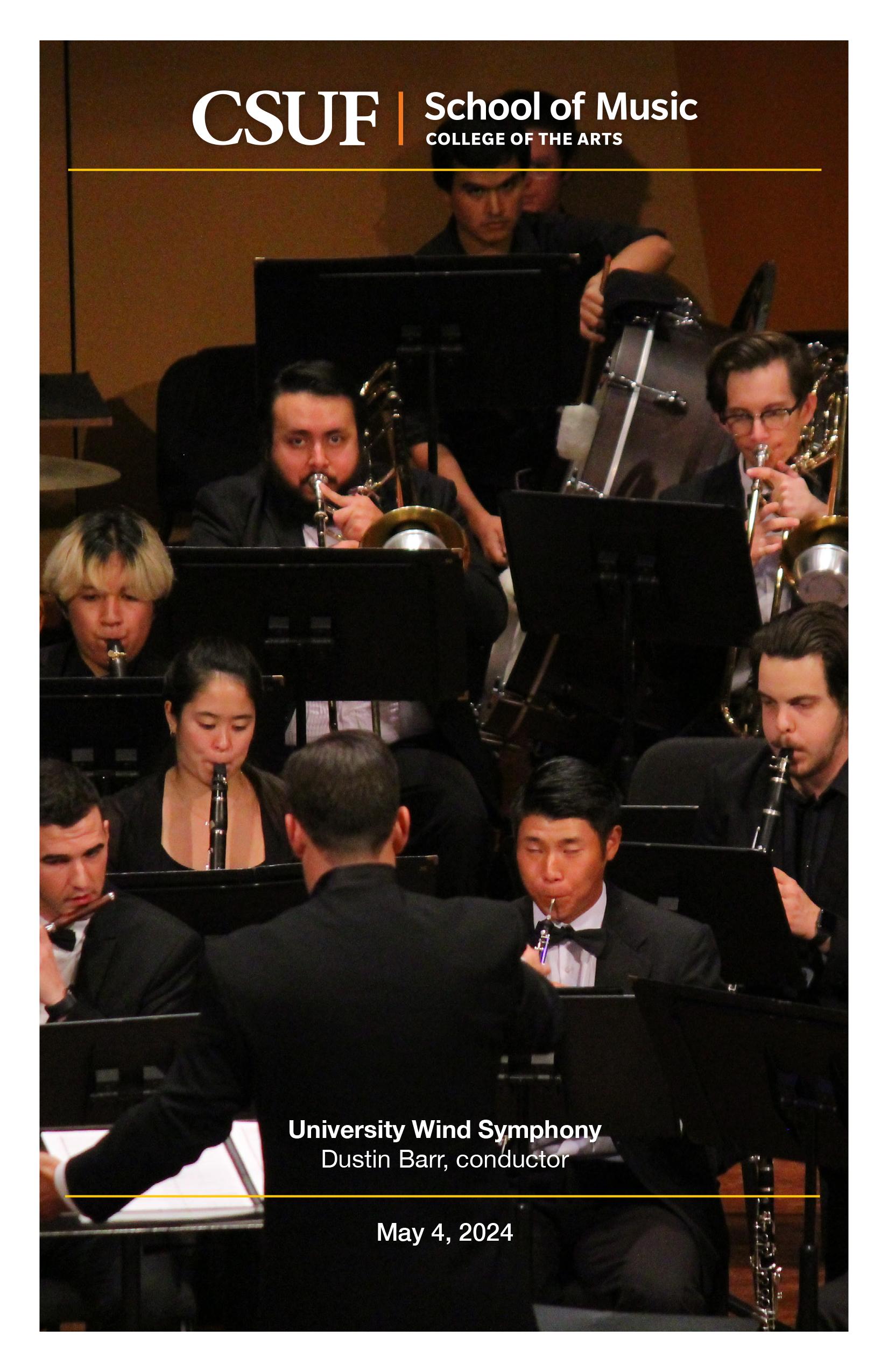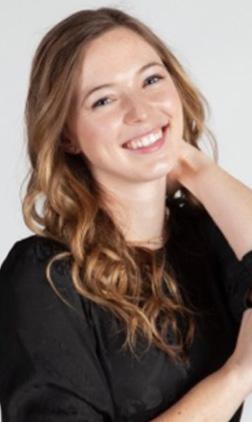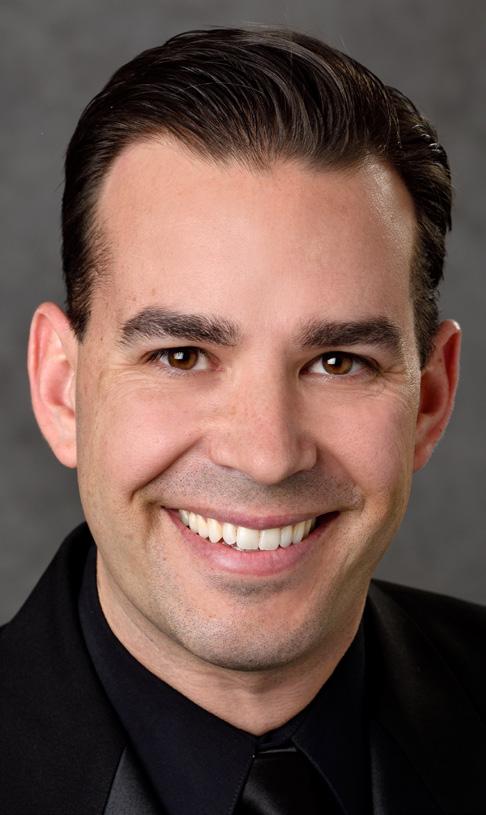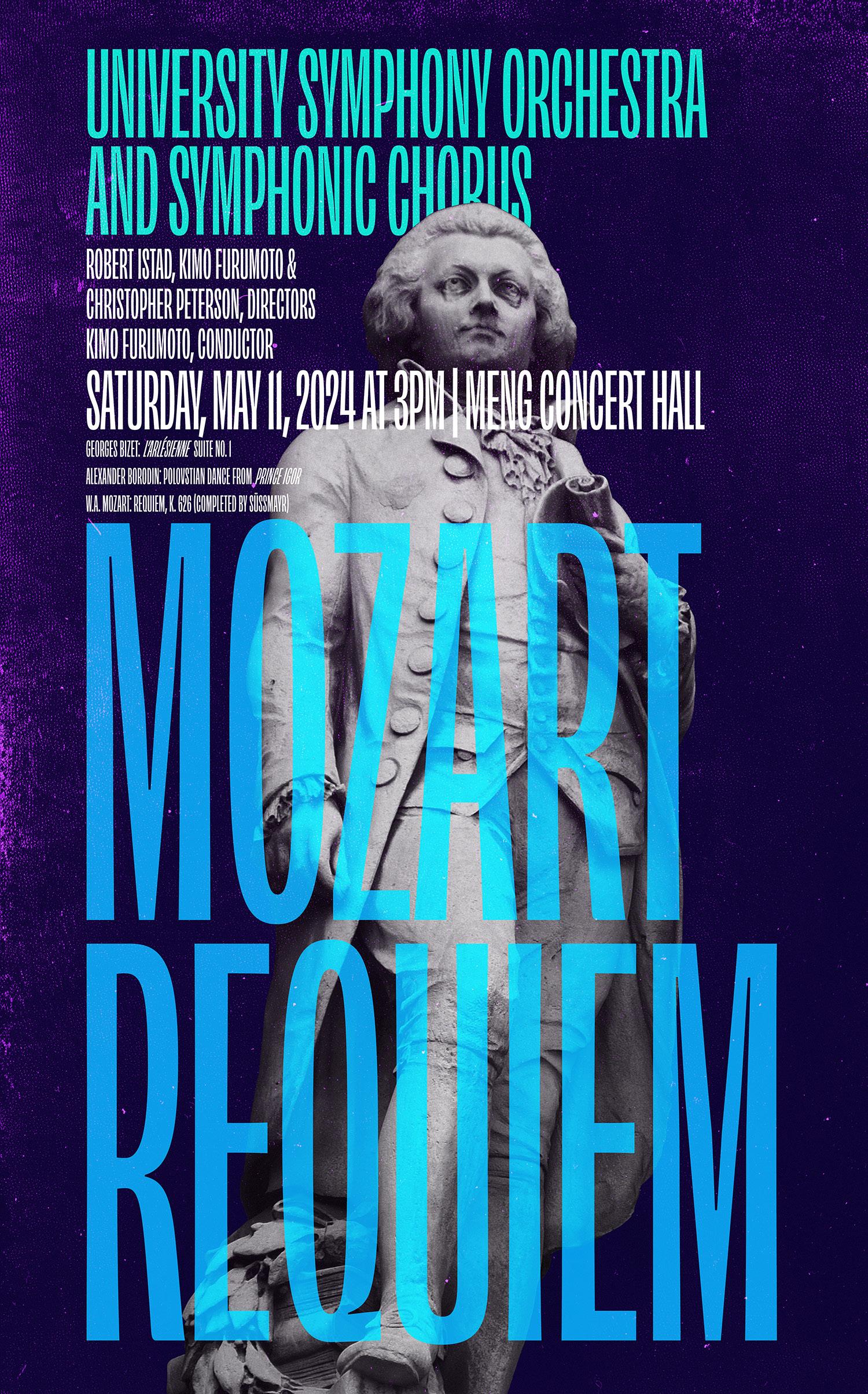
CAL STATE FULLERTON
SYLVIA A. ALVA
President, California State University, Fullerton
AMIR H. DABIRIAN
Provost and VP for Academic Affairs
ARNOLD HOLLAND, EDD
Dean, College of the Arts
CSUF SCHOOL OF MUSIC
DR. RANDALL GOLDBERG Director, School of Music
KIMO FURUMOTO
Assistant Director, School of Music
BONGSHIN KO
Assistant Director, School of Music
SCHOOL OF MUSIC FULL-TIME FACULTY AND STAFF
Faculty
Conducting
Kimo Furumoto – instrumental
Dr. Robert Istad – choral
Dr. Dustin Barr – instrumental
Jazz and Commercial Music
Bill Cunliffe* – jazz piano; arranging; Fullerton Jazz Orchestra, Fullerton Big Band and combo director
Rodolfo Zuñiga – jazz studies, jazz percussion, and music techology; Fullerton Chamber Jazz Ensemble director
Piano, Organ, Piano Pedagogy
Ning An – piano
Bill Cunliffe – jazz piano
Alison Edwards* – piano, piano pedagogy, class piano
Myong-Joo Lee – piano
Dr. Robert Watson – piano
Music Education, Teacher Training, and Teaching Credential
Dr. Christopher Peterson – choral
Dr. Gregory X. Whitmore* – instrumental
Music in General Education
Dr. John Koegel*
Dr. Katherine Reed
Music History and LIterature
Dr. Vivianne Asturizaga – musicology
Dr. John Koegel* – musicology
Dr. Katherine Powers – musicology
Dr. Katherine Reed – musicology

Strings
Kimo Furumoto – Director of Orchestra Studies and University Symphony Orchestra conductor
Bongshin Ko – cello
Dr. Ernest Salem* – violin
Theory and Composition
Dr. Pamela Madsen – composition, theory
Dr. Ken Walicki* – composition, theory
Vocal, Choral, and Opera
Dr. Robert Istad – Director of Choral Studies and University Singers conductor
Dr. Kerry Jennings* – Director of Opera
Dr. Christopher Peterson – CSUF Concert Choir and Singing Titans conductor
Dr. Joni Y. Prado voice, academic voice courses
Woodwinds, Brass, and Percussion
Dr. Dustin Barr – Director of Wind Band Studies, University Wind Symphony, University Band
Jean Ferrandis – flute
Sycil Mathai* – trumpet
Dr. Gregory X. Whitmore University Symphonic Winds conductor
Staff
Michael August – Production Manager
Eric Dries – Music Librarian
William Lemley – Audio Technician
Jeff Lewis – Audio Engineer
Chris Searight – Music Instrumental Services
Paul Shirts – Administrative Assistant
Elizabeth Williams – Business Manager
* denotes Area Coordinator facebook.com/CSUFMusic instagram.com/CSUFMusic soundcloud.com/csufmusic music.fullerton.edu


Welcome to the Spring 2024 Performing Arts Season at Cal State Fullerton’s College of the Arts. Whether you are a first-time or long-time patron, a friend, or parent to one of our exceptional students, thank you for joining us. Your support makes all the difference to their success.
I am pleased to present another semester of programming powered by the incredible gifts of our Art, Dance, Music, and Theatre students. This spring, the School of Music starts the season with a trio of concerts February 16–18 by artists-in-residence Talich Quartet; faculty artist Damon Zick and his Quarteto Nuevo featuring fellow faculty artist Bill Cunliffe; and University Symphony Orchestra. In May, University Symphony Orchestra and Symphonic Chorus will close the concert season with a performance of Mozart’s emotionally charged “Requiem.” Begovich Gallery presents the Begovich Visual Arts Lecture Series with visiting artists’ talks throughout the semester, including multidisciplinary artist Hings Lim on February 22, whose work will also be exhibited at Grand Central Art Center. The Department of Theatre and Dance begins their season in March with “Marisol,” a darkly comedic fantasy where the title character must find hope in a post-apocalyptic Brooklyn where angels are taking up arms and coffee is extinct. Hilarious, multiple Tony award-winning modern musical send-up “Urinetown” closes the theatre season just as CSUF’s dancers and choreographers take to the stage for “Spring Dance Theatre.”
When our students demonstrate their talents on stage and in the studio, their creative energy is undeniable, but the sacrifice and struggle it took to get there is often less perceptible. We can’t see the hours spent creating, the days of rehearsals, and the years of practice. For many students, the sparks of innovation and artistry that drove them to pursue the arts are often diminished by the high cost of an education. The Dean’s Fund for Excellence provides support for students in need through scholarships, artist residencies, and other financial assistance, ensuring them the opportunity to thrive in the arts. If you believe in their sparks of brilliance, please consider a donation of any amount to the Dean’s Fund for Excellence.
Thank you again for joining us this season and for championing the arts in higher education. I hope to see you at one of the college’s many performances and events this spring.
Sincerely,
 Arnold Holland, EdD Dean, College of the Arts
Arnold Holland, EdD Dean, College of the Arts
SCAN THIS QR DONATE TODAY TO THE DEAN’S FUND FOR EXCELLENCE

PROGRAM
A Glimpse of the Eternal (2016) ...................................................................
Aaron Perrine (b. 1972)
Emma Johnson Miranda, graduate student conductor
New England Triptych (1956) .................................................................
William Schuman Be Glad Then, America (1910-1992) When Jesus Wept Chester
Michael Kerr, trumpet Dylan Barnum, euphonium
Flourishes and Meditations.....................................................................
Gandalfi on a Renaissance Theme (2010)
Theme
Variation I (A Cubist Kaleidoscope)
Variation II (Cantus in augmentation: speed demon)
Variation III (Carnival)
Variation IV (Tune’s in the round)
Variation V (Spike)
Variation VI (Rewind/Fast Forward)
Variation VII (Echoes: a surreal reprise)
Of Our New Day Begun (2015) ...................................................................
Michael
(b. 1956)
Omar Thomas (b. 1984)
PROGRAM NOTES
A Glimpse of the Eternal AARON PERRINE
With works in a variety of genres, Aaron Perrine’s music has been performed by some of the leading ensembles and soloists across the United States and beyond. He is a two-time winner of the American Bandmasters Association Sousa/Ostwald Award for his compositions—Only Light in 2015 and Pale Blue on Deep in 2013. Additionally, April, another one of his compositions, was a finalist in the first Frank Ticheli Composition Contest and was included in the series, Teaching Music through Performance in Band. His music for band has also been featured at The Midwest Clinic, The Western International Band Clinic, and at numerous all-state, state conference and honor band concerts.
Perrine’s chamber music has received many notable performances. Most recently, Primal, for saxophone quartet, was performed at the 2014 NASA Biennial Conference in Urbana-Champaign, Illinois, and the 2012 World Saxophone Congress XVI in St. Andrews, Scotland. Further, Bridge Suite, for alto saxophone and cello, was performed at the 2012 NASA Biennial Conference in Tempe, Arizona.
Perrine has received degrees from the University of Iowa, the University of Minnesota and the University of Minnesota, Morris. He is currently on the faculty at Cornell College. Regarding his composition, Perrine writes:
A Glimpse of the Eternal was commissioned by Dr. Richard Mark Heidel and the University of Iowa Symphony Band in celebration of the opening of the School of Music’s brand new Voxman Music Building. The theme of the concert was “coming home,” and I knew I
wanted to incorporate that idea into the work in some way. I decided to go to an Iowa-born poet, Ted Kooser (2004-2006 U.S. Poet Laureate, winner of the 2005 Pulitzer Prize in poetry), for inspiration. I’ve long been a fan of Kooser’s poetry; I feel he captures the beauty and essence of the Midwest like no other. While the music is not directly related to the poem which shares the same title, I still wanted the abstract connection to exist. Further, the title relates to this specific concert in that for many, it was their first visit to the new Voxman Music Building: an amazing structure that will serve as the home for the University of Iowa School of Music for years to come.
New England Triptych WILLIAM SCHUMAN
William Schuman was born in New York City in 1910. After playing in dance bands and writing pop songs as a teenager, Schuman turned to classical composition upon hearing the New York Philharmonic at Carnegie Hall in 1930. He received his Bachelor’s in Music Education from Columbia University while studying composition privately with Roy Harris before joining the faculty of Sarah Lawrence College in 1935. His success as a composer resulted in Schuman being named the first recipient of the Pulitzer Prize for Music in 1943 (Secular Cantata No. 2: A Free Song). Schuman’s reputation as a composer, teacher, and visionary artistic leader led to his appointment as the president of the Juilliard School, a post he held from 1945 to 1962. His distinguished career brought many honors, awards, and accolades, including two Guggenheim Fellowships and honorary degrees from twenty American colleges and universities. At
PROGRAM NOTES
the time of his death in 1992, he was a revered musician and an eloquent spokesman regarding American music. Although he composed in all media, Schuman was primarily a composer of large-scale symphonic works. Most of his ideas were conceived in terms of a big sonic arsenal, capable of infinite variety. One of Schuman’s more popular compositions, the New England Triptych was written in homage to the eighteenthcentury Boston composer William Billings (1746–1800), often cited as America’s first composer. Commissioned by the conductor André Kostelanetz, the Triptych received its orchestral première in Miami in October 1956. The composer penned the following introduction to the work:
William Billings is a major figure in the history of American music. The works of this dynamic composer capture the spirit of sinewy ruggedness, deep religiosity, and patriotic fervor that we associate with the Revolutionary period. Despite the undeniable crudities and technical shortcomings of his music, its appeal, even today, is forceful and moving. I am not alone among American composers who feel an identity with Billings, and it is this sense of identity which accounts for my use of his music as a point of departure. These pieces do not constitute a “fantasy” on themes of Billings, nor “variations” on his themes, but rather a fusion of styles and musical language.
Schuman transcribed each movement for band following separate commissions over an eighteen-year period. “Be Glad Then, America” was the last of the three movements to be transcribed and was first heard in its new expanded form for band in 1975. In this movement, Schuman uses fragments of text from Billings to build a now wordless setting
of this fasting day anthem. Following a short introduction by solo timpani, a brief development suggesting the anthem’s concluding “Halleluyah” leads to a grand, yet varied, statement of the words “Be glad then, America, Shout and rejoice.” The timpani, once again a solo voice, provides a transition to a fugal section based on the words “and ye shall be satisfied.” The music gains momentum as the various fragments are combined before giving way to a triumphant return to “Halleluyah” and a conclusive exclamation of “Shout and Rejoice.”
Schuman transcribed “When Jesus Wept” in 1959 and in the process, changed the key and re-assigned the solo voices. While the original features an extended oboe and bassoon duet, the band version is instead scored for solo trumpet and euphonium. This instrumental change, coupled with the lone field drum of the introduction, create in this work a subtly martial, though mournful, atmosphere as the four-part canon poignantly captures Jesus’ agony at the failings of humanity.
Among the patriotic anthems sung during the Revolutionary War, only “Yankee Doodle” was more popular than Billings’ “Chester.” The song first appeared in 1770 and was revised by Billings in 1778. It is the later version that is best known today. After presenting Billings’ tune in two simple hymn-like statements, Schuman departs from the familiar by varying tempo, rhythmic structure, articulations, texture, and harmony before returning to the opening simplicity and triumphant final statement. The band version of “Chester” was the first of the three movements to be transcribed and was completed in 1957.
Flourishes and Meditations on a Renaissance Theme
MICHAEL GANDALFI
Michael Gandolfi’s earliest musical involvement was in rock and jazz
PROGRAM NOTES
improvisation beginning at age eight as a self-taught guitarist. As his improvisational skills developed he became increasingly interested in music composition and began formal study in his early teens.
Gandolfi received the B.M. and M.M. degrees in composition from the New England Conservatory of Music, as well as fellowships for study at the Yale Summer School of Music and Art, the Composers Conference, and the Tanglewood Music Center.
Gandolfi is the recipient of numerous awards, including grants from the Fromm Foundation, the Koussevitzky Music Foundation, the John Simon Guggenheim Foundation, the American Academy of Arts and Letters, and the Massachusetts Cultural Council. His music has been performed by many leading ensembles.
Gandolfi offers the following introduction to this composition:
Flourishes and Meditations on a Renaissance Theme is a set of seven variations on an anonymous Renaissance melody that is simply titled Spagnoletta. It is derived from a popular melody titled Españoleta or ‘Little Spanish Tune.’ I first knew this melody as quoted by Joachin Rodrigo in his Fantasia para un gentilhombre for guitar and orchestra. I also found this tune in the 1970s in a collection of Renaissance songs for classical guitar, and I have played it in that form countless times over the years. I was motivated to probe this elegant tune with which I have been acquainted for four decades, with the expectation that it would prompt a wealth of ideas unique to such a longstanding relationship. The beauty and elegance of the original tune resides in its simplicity, so I chose to present it at the outset of the piece in a clear and streamlined orchestration. The
basic nature or character of each variation is revealed in the labels attached.
The form of Spagnoletta is AABB followed by a coda. This roughly tripartite form is reflected in the large‐scale design of my piece, which is also comprised of three parts, each of which mirrors important structural features of the original. The first part consists of Variations I and II. Each of these variations adheres strictly to the form of Spagnoletta. Additionally, Variation I has a kinship to cubist painting in which various features of the original are fragmented, framed, and juxtaposed, resulting in a kaleidoscopic amplification of its details. Variation II uses the entire Spagnoletta melody as a cantus firmus while new melodies and lines are sounded over it—an ancient musical technique popular in medieval and renaissance times. The second part comprises Variations III, IV, and V. These variations are the most wide‐ranging of the set, but always maintain motivic connections to Spagnoletta. Variations III and V are each expressed in AA form, an obvious reference to the formal repetitions of the original. Variation IV uses motives of the Spagnoletta to form a mobile or layered ostinato, upon which a type of canon known as a ‘round’ is sounded. The melody of this round is built with melodic motives found in Spagnoletta. Variations VI and VII form the third and final part of the piece and function similarly to the coda of Spagnoletta, which introduces no new melodic material but utilizes previously heard motives in new permutations that lead to the final cadence. In this spirit, Variation VI points in two directions: it forecasts
PROGRAM NOTES
the main texture of Variation VII while briefly reflecting upon each variation already heard (in reverse order). Variation VII returns to the original Spagnoletta melodies but places them in a new ‘dreamlike’ environment featuring a series of pulsating patterns and textures interwoven with strands of each of the original melodies, all of which move the piece to a gentle close.
Flourishes and Meditations on a Renaissance Theme was commissioned by the President’s Own United States Marine Band and is dedicated to that group and their former Directors, Colonel Michael J. Colburn and Colonel Jason K. Fettig.
Of Our New Day Begun OMAR THOMAS
Described as “elegant, beautiful, sophisticated, intense, and crystal clear in emotional intent,” the music of Omar Thomas continues to move listeners everywhere it is performed. Born to Guyanese parents in Brooklyn, New York in 1984, Omar moved to Boston in 2006 to pursue a Master of Music in Jazz Composition at the New England Conservatory of Music. He is the protégé of lauded composers and educators Ken Schaphorst and Frank Carlberg, and has studied under multiple Grammywinning composer and bandleader Maria Schneider.
Hailed by Herbie Hancock as showing “great promise as a new voice in the further development of jazz in the future,” educator, arranger, and award-winning composer Omar Thomas has created music extensively in the contemporary jazz ensemble idiom. It was while completing his Master of Music Degree that he was appointed the position of Assistant Professor of Harmony at Berklee College of Music at the surprisingly young age of 23. He
was awarded the ASCAP Young Jazz Composers Award in 2008 and invited by the ASCAP Association to perform his music in their highly exclusive JaZzCap Showcase, held in New York City. In 2012, Omar was named the Boston Music Award’s “Jazz Artist of the Year.” He is currently on faculty in the Music Theory department at The Peabody Institute of The Johns Hopkins University in Baltimore.
Omar’s music has been performed in concert halls the world over. He has been commissioned to create works in both jazz and classical styles. His work has been performed by such diverse groups as the Eastman New Jazz Ensemble, the San Francisco and Boston Gay Mens’ Choruses, and the Colorado Symphony Orchestra, in addition to a number of the country’s top collegiate music ensembles. Omar has had a number of celebrated singers perform over his arrangements, including Stephanie Mills, Yolanda Adams, Nona Hendryx, BeBe Winans, Kenny Lattimore, Marsha Ambrosius, Sheila E., Raul Midon, Leela James, Dionne Warwick, and Chaka Khan. His work is featured on Dianne Reeves’s Grammy Award-winning album, “Beautiful Life.” For this work, Omar was named the 2014 Lavender Rhino Award recipient by The History Project, acknowledging his work as an up-and-coming activist in the Boston LGBTQ community. Says Terri Lyne: “Omar Thomas will prove to be one of the more important composer/ arrangers of his time.”
Regarding his composition on today’s program, Omar writes:
Of Our New Day Begun was written to honor nine beautiful souls who lost their lives to a callous act of hatred and domestic terrorism on the evening of June 17, 2015 while worshipping in their beloved sanctuary, the historic Emanuel African Methodist Episcopal Church (affectionately referred to as “Mother
PROGRAM NOTES
Emanuel”) in Charleston, South Carolina. My greatest challenge in creating this work was walking the line between reverence for the victims and their families, and honoring my strong, bitter feelings towards both the perpetrator and the segments of our society that continue to create people like him. I realized that the most powerful musical expression I could offer incorporated elements from both sides of that line—embracing my pain and anger while being moved by the displays of grace and forgiveness demonstrated by the victims’ families.
Historically, black Americans have, in great number, turned to the church to find refuge and grounding in the most trying of times. Thus, the musical themes and ideas for Of Our New Day Begun are rooted in the Black American church tradition. The piece is anchored by James and John Johnson’s time-honored song, Lift Every Voice and Sing (known endearingly as the “Negro National Anthem”) and peppered with blues harmonies and melodies. Singing, stomping, and clapping are also prominent features of this work, as they have always been a mainstay of black music traditions, and the inclusion of the tambourine in these sections is a direct nod to black worship services.
Of Our New Day Begun begins with a unison statement
of a melodic cell from Lift Every Voice… before suddenly giving way to ghostly, bluesy chords in the horns and bassoons. This section moves to a dolorous and bitter dirge presentation of the anthem in irregularly shifting 12/8 and 6/8 meter, which grows in intensity as it offers fleeting glimmers of hope and relief answered by cries of blues inspired licks. A maddening, ostinato-driven section representing a frustration and weariness that words cannot, grows into a group singing of Lift Every Voice and Sing, fueled by the stomping and clapping reminiscent of the black church. In the latter half of the piece the music turns hopeful, settling into 9/8 time and modulating up a step during its ascent to a glorious statement of the final lines of Lift Every Voice… in 4/4, honoring the powerful display of humanity set forth by the families of the victims. There is a long and emotional decrescendo that lands on a pensive and cathartic gospelinspired hymnsong. Returning to 9/8 time, the piece comes to rest on a unison F that grows from a very distant hum to a thunderous roar, driven forward by march-like stomping to represent the ceaseless marching of black Americans towards equality.
UNIVERSITY WIND SYMPHONY
Piccolo
Daniella Arditti
Joel Charboneau
Flute
Anthony Alcain
Daniella Arditti
Joel Charboneau
Crystal Lee
Oboe
Issac Chyun
Luke Dodson
Johnston Nguyen
Bassoon
Theresa Harvey
Emma Johnson Miranda
E-flat Clarinet
James Nguyen
Clarinet
Grigorii Avetisian
Rodney Borg
Daniel Hernandez
James Nguyen
Manami Ogura
Josiah Sanchez
Tomoya Sano
Bass Clarinet
Monserrat Rodriguez
Josiah Sanchez
Saxophone
Julio Hernandez
Joshua Lopez
Kimberly Orozco
Sam Tobilla
Trumpet
Trevor Cannon
Michael Kerr
Christian Perez
Alex Santiago
Taylor Shirley
Susanna Sun
Horn
Alexander Delperdang
Jeffrey Gumpertz
Grant Laren
Emma Lumsden
Trombone
Zakary Brewer
Ashley Kocour
Bryan Melchor
Bass Trombone
Carlo Bonelli
Euphonium
Dylan Barnum
Chris Zavala
Tuba
Eduardo Bonilla
Miguel
Jimenez Maldonado
Cody Kleinhans
Percussion
Andrew Alvidrez
Wilson Le
Salvador Montano
Galadriel Pokracki
Jesus Santamaria
John Sunderman
Jacob Wetzel
Piano
Haosen Wang
Music Librarians
Daniel Castellanos
Emma Johnson Miranda
Johnston Nguyen
Logistics Manager
Daniel Hernandez

ABOUT THE GRADUATE STUDENT CONDUCTOR

Emma Johnson Miranda
Emma Johnson Miranda is a conductor, musician, and educator who was born and raised in Houston, Texas. She is currently a graduate student at California State University-Fullerton, studying instrumental conducting with Dr. Dustin Barr. Along with completing her degree in conducting, she is finishing her teaching credential all while playing bassoon in the University Wind Symphony and the University Symphony Orchestra.
In high school, Miranda took advantage of leadership opportunities in her band program and participated in the 2016 TMEA 6A Honor Orchestra and various TMEA Region Honor Bands. As an undergraduate student, Miranda studied conducting with Dr. Shawn Smith and bassoon with Dr. Christian Smith at Brigham Young University. Additionally, she played bassoon in the BYU Wind Symphony–a group that toured to Spain and Portugal in May 2023 and qualified to perform at the 2024 WASBE conference in South Korea. She graduated from BYU in April 2023 with a Music BA and a minor in Family Life. She and her husband, EJ Miranda, currently live in Rancho Cucamonga, CA where they enjoy spending time at the beach, eating good food, and catching up on their favorite TV shows.

ABOUT THE CONDUCTOR

Dustin Barr
Dustin Barr is Director of Wind Studies and Associate Professor of Music at California State University, Fullerton where he actively manages all aspects of the university’s comprehensive band program, conducts the Wind Symphony and University Band, oversees the graduate wind conducting program, and teaches courses in conducting and music education. Prior experiences include appointments as Assistant Director of Bands at Michigan State University, Director of Bands at Mt. San Antonio College, and Assistant Director of Bands at Esperanza High School in Anaheim, California.
Barr’s research includes working extensively with theatre director Jerald Schwiebert on the melding of performance theory with various movement theories and disciplines to establish innovative pedagogical approaches to teaching conducting. Their co-authored text, Expressive Conducting: Movement and Performance Theory for Conductors, was published by Routledge in 2018. This work has made Barr a highly regarded pedagogue in the field of conducting. He has given numerous masterclasses throughout the USA and in Spain. Furthermore, his research on Scandinavian music for chamber wind ensembles has produced published performance editions of Asger Lund Christiansen’s Octet, op. 43 and Svend Schultz’s Divertimento for Wind Octet.
Barr is a recipient of numerous accolades for his conducting and scholarly work. Signal honors include the CSUF Wind Symphony’s invitations to perform at the 2019 National Conference of the College Band Directors National Association and the 2023 California All State Music Education Conference. The Wind Symphony’s 2022 album, Effigy, is another noteworthy achievement. This album features the music of composer Brian Baumbusch and was the result of innovative musical practices and remote recording projects undertaken during the Covid-19 pandemic. Barr has been a guest conductor of prominent ensembles like the United States Army Band “Pershing’s Own,” is a winner of the American Prize’s Ernst Bacon Award for the Performance of American Music, a finalist for the American Prize in conducting, a Rackham Merit Fellow at the University of Michigan, and he was recognized as one of the nation’s preeminent young conductors as part of the 2010 National Band Association’s Young Conductor Mentor Project.
Barr holds a Doctor of Musical Arts in conducting from the University of Michigan. He received his Master of Music degree and Bachelor of Music degree from California State University, Fullerton. His principal conducting mentors include Michael Haithcock and Mitchell Fennell.

$1,000,000 +
Terri & Bob Niccum
Stanley Mark Ryan
$100,000 - $999,000
Darryl Curran
Gregory & Shawna Ellis
David & Shirley Sepel
William Wagner
$25,000 - $99,999
Lee Begovich
Johnny Carson Foundation
Leo Freedman Foundation
Karyn L. Hayter
Robin & Steve Kalota
Sallie Mitchell Revocable Trust
Donna & Ernest Schroeder
Sue & Dr. Edward A. Sullivan
The Andy Warhol Foundation for the Visual Arts
$10,000-$24,999
Apple Inc.
Drs. Joseph and Voiza Arnold
Robin de la Llata Aimé & John B. Aimé
EMC Associates, Ltd
Ellen M. and William A. Groves
Kathleen A. Hein
J. P. Morgan Charitable Giving Fund
Marianne R. Kreter
Eleanore & James Monroe
Lucina L. Moses & John Brennan
Dana Praitis
Louise P. Shamblen
Dr. Kristin K. Stang & Dr.Gordon P. Capp
Jeffrey A. Stang & Lisa
McDaniel Stang
$5,000-$9,999
Boeing North American Fitness Inc.
Steven Caulk
Continuing Life LLC
Morningside of Fullerton
Fidelity Charitable Gift Fund
Anonymous
Friends of Jazz, Inc
Leslie Garman
Dr. Margaret Faulwell Gordon
MaryLouise & Edward Hlavac
DONOR APPLAUSE
Jill Kurti Norman
Norma L. Morris
Bettina Murphy
Dwight Richard Odle Foundation
Orange County Community Foundation
Stephen Rochford, DMA
Schwab Charitable Fund
Barbara Thompson
$1,000-$4,999
John A. Alexander
Judy Atwell
Dorothy & Nick Batinich
Dr. & Mrs. Keith O. Boyum
Janet & Allan Bridgford
Broadway Arts Studio
Marion Brockett
California Community Foundation
Katherine Calkins
James Case
Charities Aid Foundation of America
CMC
Joann Driggers & Stephen Collier
Harriet & William Cornyn
CSU Northridge Foundation
CSUF Auxiliary Services Corporation
Jeannie Denholm
Dr. Marc R. Dickey
Susan & Richard Dolnick
Charlie Duncheon
Anne Fingal
Fullerton Families & Friends Foundation
Jane Deming Fund
Marsha Gallavan
Annette & Dr. Leon Gilbert
Renee Gillespie
Dr. Mark J. Goodrich
Michael R. Haile
Susan Hallman
James L. Henriques
Frank A. Hinojoz
The Ibanez Family
Janet L. Smith Voice Studio
Sandra & Norman H. Johnson
Michelle Jordan
Gladys M. Kares
Ronald L. Katz Family Foundation
Masako & Ray Kawase
Gayle A. Kenan
Ms. Junko Klaus
Dr. Irene L. Lange
Shirley & Eugene Laroff
Marilyn M. Little
The Loftus Family Foundation
Jason Lomeda
Juan Lopez
Juliette Lunger & John A. Hoyos
Melissa Madsen
Paul Coluzzi & John M. Martelli
Karen & William McClung
Thelma Mellott
Patti & Carl Miller
Jamie M. Spitzer
David Navarro
Grace & Ujinobu Niwa
Debra L. Noble
Tyler Stallings & Naida Osline
Deanna & Arie Passchier
Aleks Lyons & Geoffrey Payne
Peace Mountain Theatre Company Inc
Anonymous
Jim Plamondon
Linda L. & E. B. Powell
The Presser Foundation
Sharon & Dr. Anil K. Puri
R23 International Inc.
Brian Rennie & Lori Rennie
Nancy & Robert Rennie
David Rhone
Liz Riede
Thomas C. Robinson
Mary L. Rupp
D. B. Schmitt
D Barry Schmitt R. Trust
Martha Shaver
Ingrid R. Shutkin
Barbara Kerth & Ms. Lorena Sikorski
Janet L. Smith
Roberta & Robert Sperry
Thomas Statler
Douglas G. Stewart
Ernie Sweet
Carolyn & Tom Toby
Fram & Julie Virjee
Verne D. Wagner
Tina L. Walker
Patrick Young
Ruth & Wayne P. Zemke
*deceased
Very special care has been given to the preparation of this donor listing. Please contact Ann Steichen at (657) 278-7124 with questions or concerns.
**Gifts received from July 1, 2022 through November 1, 2023
ONTIVEROS SOCIETY
The Ontiveros Society includes individuals who have provided a gift for Cal State Fullerton through their estate plan. We extend our deep appreciation to the following Ontiveros Society members, whose gifts will benefit the students and mission of the College of the Arts:
ANONYMOUS
JOHN ALEXANDER
LEE & DR. NICHOLAS A.* BEGOVICH
GAIL & MICHAEL COCHRAN
MARC R. DICKEY
JOANN DRIGGERS
BETTY EVERETT
CAROL J. GEISBAUER
& JOHN* GEISBAUER
SOPHIA & CHARLES GRAY
MARYLOUISE & ED HLAVAC
GRETCHEN KANNE
DR. BURTON L. KARSON
ANNE L. KRUZIC*
LOREEN & JOHN LOFTUS
ALAN A. MANNASON*
WILLIAM J. MCGARVEY*
DR. SALLIE MITCHELL*
ELEANORE P. & JAMES L. MONROE
LYNN & ROBERT MYERS
DWIGHT RICHARD ODLE*
SHERRY & DR. GORDON PAINE
DR. JUNE POLLAK & MR. GEORGE POLLAK*
DR. STEPHEN M. ROCHFORD
MARY K. & WILLIAM SAMPSON
LORENA SIKORSKI
DOUGLAS G. STEWART
ANDREA J. & JEFFREY E. SWARD
RICHARD J. TAYLOR
VERNE WAGNER
RICHARD WULFF
DR. JAMES D. & DOTTIE YOUNG*
*deceased
The College of the Arts Proudly Recognizes the 300+ Members of Our VOLUNTEER
SUPPORT GROUPS
ART ALLIANCE: Art Alliance promotes excellence and enjoyment in the visual arts, and their fundraising efforts contribute to student scholarship, gallery exhibitions, opening receptions and sculpture acquisition on campus.
SPECIAL SUPPORT AND EVENT UNDERWRITING
Fay Colmar
John DeLoof
Joann Driggers & Steve Collier
Loraine Walkington
ALLIANCE FOR THE PERFORMING ARTS: The Alliance for the Performing Arts (formerly MAMM) benefits performing arts students through underwriting visiting artists; special theatre, dance, and music performances; and other unique experiences for members.
SPECIAL SUPPORT AND EVENT UNDERWRITING
Judy Atwell
Drs. Voiza & Joe Arnold
Dr. Margaret Faulwell Gordon
Susan Hallman
Norma Morris
Richard Odle Estate
Kerry & John Phelps
Jeanie Stockwell
Verne Wagner
MUSIC ASSOCIATES: Music Associates maintains a tradition of active involvement and community support, and raises scholarship funds for School of Music students through annual fundraising events and membership dues.
SPECIAL SUPPORT AND EVENT UNDERWRITING
Marilyn Carlson
Evelyn K. Francuz
Sandy & Norm Johnson
Marti & Bill Kurschat
Karen & George Mast
Thelma & Earl Mellott
Bettina Murphy
Grace & Ujinobu Niwa
Kerry & John Phelps
Mary & Jerry Reinhart
Ann & Thad Sandford
Dodo V. Standring
Carolyn & Tom Toby
John Van Wey
MORE INFORMATION: Haley Sanford • 657-278-2663
There are many ways to support the College of the Arts, the School of Music, Department of Theatre and Dance, and Department of Visual Arts
GET INVOLVED GIVING.FULLERTON.EDU



music.fullerton.edu




 Arnold Holland, EdD Dean, College of the Arts
Arnold Holland, EdD Dean, College of the Arts









